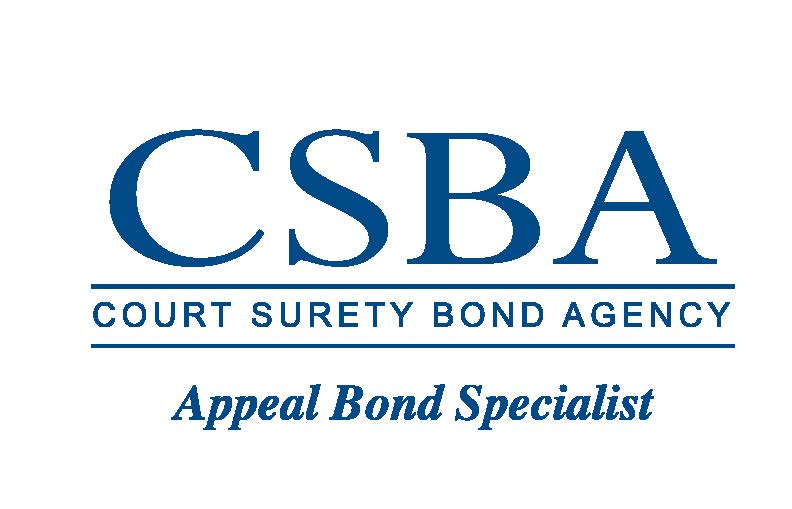Summer 2014
By Gray R. Proctor
I. General Considerations
Practitioners should be aware that federal habeas review exists to correct only errors of federal law.1 Violations of state law are still relevant when they prove a violation of a federal right, such as effective assistance of counsel. Another general matter to keep in mind is that the law governing federal habeas corpus changed greatly when congress passed the Anti-terrorism and Effective Death Penalty Act (“AEDPA”) in 1996. Do not cite to older cases without making sure AEDPA did not overrule them. Practitioners should also be aware that separate procedural rules apply.2
II. Procedural Issues
Three main procedural barriers to habeas relief exist. The first is the one-year statute of limitations in 28 U.S.C. § 2244(d). For most claims, the statute of limitations begins to run when the time elapses for seeking further review, or when the highest court declines discretionary review.3 If a state-created impediment prevented actual ling of the petition, Section 2241(d)(1)(B) applies.4 If the claim is based on a new, retroactive rule of constitutional law, Section 2241(d) (1)(C) applies. Most petitioners will never be able to use this provision because new rules are rarely retroactive.5 If applicable, the limitations period begins to run on the day that the new rule is announced, not on the day that the Supreme Court declares it retroactive.6 Finally, if the claim relies on newly-discovered evidence, Section 2244(d)(1)(D) applies; however, courts expect petitioners to make reasonable efforts to discover the factual basis for any claim within the normal one-year limitations.7
A “properly led”8 state post-conviction relief (“PCR”) motion tollsthe limitations period under Section
2244(d)(2). If it is not certain whether a PCR motion is properly filed, file the federal petition and follow up with a motion to stay and abey until the state proceedings are finished.9 The 90-day period for petitioning the U.S. Supreme Court for certiorari is not included in the tolling period.10
Equitable tolling exists,11 but is granted only in exceptional circumstances.12 Additionally, innocence can be grounds for disregarding the normal timeliness requirement.13
The second procedural barrier is the rule against successive petitions, codified at 28 U.S.C. § 2244(b). Only claims that either rely on a new, retroactive rule or newly-discovered evidence that establishes innocence may be brought, and the petitioner must obtain permission from the Court of Appeals before ling. As in other contexts, retroactivity is exceedingly unlikely and innocence is an extremely difficult showing to make.14
The final procedural bar is exhaustion/procedural default. Exhaustion requires the petitioner to first present his or her claims to the state courts. Unexhausted claims should be dismissed without prejudice, to allow the petitioner to return to state court.15 However, if an adequate and independent state procedural rule (such as the statute of limitations for ling a Rule 3.850 motion) would provide a basis for the state court to dismiss the unexhausted claim, federal courts will dismiss the claim with prejudice as defaulted rather than dismissing it without prejudice as unexhausted.16 For a rule to be adequate and independent, it must be consistently and evenly applied.17
Ineffective assistance of counsel can provide good cause to hear a procedurally defaulted claim,18 although these ineffectiveness claims also must first be presented to state courts, and may be procedurally defaulted themselves.19 Petitioners who went pro se on state post-conviction review are not subject to procedural default for claims that could not have been presented sooner.20 Petitioners who are represented for post-conviction proceedings can bring a procedurally defaulted claim if counsel’s failure to bring the claim constitutes deficient performance under the Strickland standard.21
III. Standard of Review of State Court Adjudications
Federal courts review the merits of claims adjudicated by the state courts according to a uniquely deferential standard. The state court need not cite to federal law or even explicitly decide the federal issue.22 Deference does not apply to claims not adjudicated on the merits in state court, including decisions based on procedures too fundamentally awed to result in an “adjudication.”23
For questions of law, the petitioner must show that the state court’s decision is not merely wrong, but unreasonably wrong based on the record before it.24 Only Supreme Court cases are relevant.25 Although the law must be “clearly established,”26 there is no “all fours” requirement.27 A decision is also unreasonable if the court applies an incorrect legal standard.28 For questions of fact, the petitioner similarly must show that the decision was unreasonable based on the evidence. Additionally, a petitioner may be able to rebut the presumption of correctness of a state court factual finding with clear and convincing evidence; this is not necessary if the finding was unreasonable based on the record.29 Most petitioners, however, will not be allowed to expand the record to rebut the presumption of correctness because Section 2254(e) prohibits evidentiary hearings unless the facts underlying the claim show that the petitioner was innocent. Additionally, the petitioner must fulfill one of two other requirements: either a new, retroactive constitutional rule or a factual predicate that could not have been discovered sooner with due diligence. This rule does not apply unless the petitioner is at fault, however,30 and petitioners who are not to
blame for the underdeveloped record receive the benefit of the relatively generous pre-AEDPA standard for an evidentiary hearing.31
IV. Appeals of Habeas Proceedings
Appeals require a certificate of appealability (“COA”) verifying that the issue is at least debateable.32 The District Court will decide whether to issue a certificate of appealability at the conclusion of the proceedings.33 Petitioners may apply to the Court of Appeals to grant or expand a COA. At this stage, the court cannot give full consideration to the merits of the appeal.34
Gray Proctor is a former law clerk for federal judges in the Southern District of Texas, the Eastern District of Virginia, and the Fourth Circuit Court of Appeals. His Orlando, Florida practice focuses on criminal appeals, post-conviction review, clemency, and corrections issues. He sits on the advisory board of the Bloomberg BNA Criminal Law Reporter.
Endnotes
- Estelle v. McGuire, 502 U.S. 62, 67-68 (1991).
- See generally Rules Governing Section 2254 Proceedings in United States District Courts.
- Gonzalez v. Thaler, 132 S. Ct. 641, 656 (2012); see also Clifton v. Sec’y, No. 6:10-cv-539, 2012 WL 3670264, at *5 n.3 (M.D. Fla. Aug. 27, 2012) (giving petitioner bene t of 90-day period for petitioning SCOTUS because PCA opinions are not appealable to the Florida Supreme Court).
- See Sallie v. Humphrey, 789 F. Supp. 2d 1351, 1357-60 (M.D. Ga. 2011).
- Whorton v. Bockting, 549 U.S. 406, 418-21 (2007).
- Dodd v. United States, 545 U.S. 353, 358 (2005).
- Aron v. United States, 291 F.3d 708, 712 (11th Cir. 2002) (explaining that due diligence “does not require a prisoner to undertake repeated exercises in futility or to exhaust every imaginable option, but rather to make reasonable efforts”).
- Artuz v. Bennett, 531 U.S. 4, 8 (2000); but see Drew v. Dep’t of Corr., 297 F.3d 1278, 1284 (11th Cir. 2002) (holding that a successive Rule 3.850 petition was “properly led”).
- See Rhines v. Weber, 544 U.S. 269, 278 (2005).
- Lawrence v. Florida, 549 U.S. 327 (2007).
- Holland v. Florida, 130 S. Ct. 2549 (2010).
- Downs v. McNeil, 520 F.3d 1311, 1323 (11th Cir. 2008).
- McQuiggin v. Perkins, 133 S. Ct. 1924, 193334 (2013); see also House v. Bell, 547 U.S. 518 (2006) (actual innocence standard).
- For examples, see Sawyer v. Whitley, 505 U.S. 333 (1992) (applying identically phrased pre-AEDPA common-law standard) and progeny.
- Rose v. Lundy, 455 U.S. 509 (1982).
- Snowdenv.Singletary,135F.3d732,735-78 (11th Cir. 1998).
- Lee v. Kemna, 534 U.S. 362, 387 (2002).
- Coleman v. Thompson, 501 U.S. 722, 753-54 (1991).
- Edwards v. Carpenter, 529 U.S. 446 (2000).
- Martinez v. Ryan, 132 S. Ct. 1309, 1320 (2012).
- Id.
- Johnson v. Williams, 133 S. Ct. 1088, 1096 (2013); see also Allen v. Sec’y, Fla. Dep’t of Corr., 611 F.3d 740, 748 (11th Cir. 2010).
- Skipwith v. McNeil, No. 09-cv-60361, 2011WL 1598834, at *11 (S.D. Fla. Feb. 17, 2011) (citing Winston v. Kelly, 592 F.3d 535, 555-56 (4th Cir. 2010)).
- Cullen v. Pinholster, 131 S. Ct. 1388, 1398 (2011); see also Knowles v. Mizayance, 556 U.S. 111, 123 (2009) (discussing the “doubly deferential judicial review that applies to a Stricklandclaim evaluated under the § 2254(d) (1) standard”); Yarboroughv. Alvarado, 541 U.S. 652, 664 (2004) (discussing role of generality of rule in determining whether it was unreasonably applied).
- Marshall v. Rodgers, 133 S. Ct. 1446, 145051 (2013).
- Williams v. Taylor, 529 U.S. 362, 412 (2000).
- Id. at 407; but see White v. Woodall, 134 S.Ct. 1697, 1705-07 (2014) (rejecting unreasonable failure to extend where court would have to extend reasoning of prior case as well.
- Lafler v. Cooper, 132 S. Ct. 1376, 1390 (2012) (finding decision unreasonable where state court failed to apply Strickland to claim of ineffective assistance of counsel).
- Adkins v. Warden, Holman Corr. Fac., 710 F.3d 1241, 1249 (11th Cir.), cert denied 134 S. Ct. 268 (Oct. 7, 2013).
- Williams v. Taylor, 529 U.S. 420, 432 (2000); see also Jefferson v. Upton, 560 U.S. 284, 288-10 (2010).
- Townsend v. Sain, 372 U.S. 293, 313 (1963), overruled on different grounds by Keeney v. Tamayo-Reyes, 504 U.S. 1 (1992).
- Gonzalez v. Sec’y, Dep’t of Corr., 366 F.3d 1263, 1267 (11th Cir. 2004).
- Rule 11(a), Rules Governing Section 2254 Cases in the United States District Courts.
- Gonzalez, 366 F.3d at 1267.



